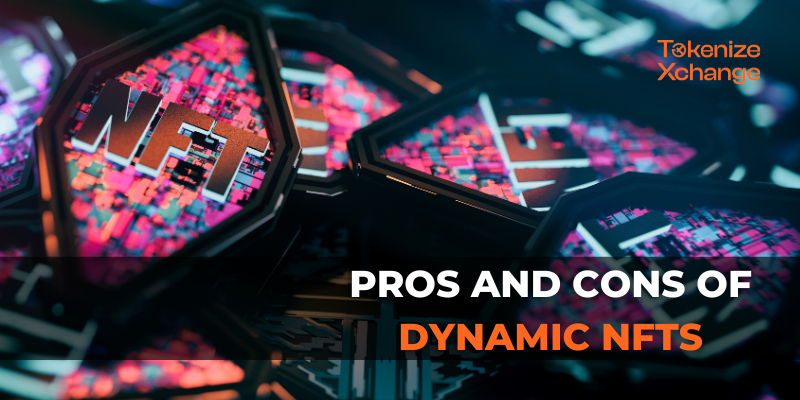
The realm of digital art and collectibles has experienced a revolutionary shift due to the advent of Non-Fungible Tokens (NFTs) in recent years. These NFTs, unique digital assets recorded on blockchain, have ushered in a new era of undeniable ownership and rarity for digital creations. Within the NFT landscape, two prominent categories have risen to prominence: dynamic NFTs and static NFTs, both captivating considerable attention.
In stark contrast to the conventional static digital art that has long defined the NFT space, dynamic NFTs emerge as a departure that opens the gateway to a realm of boundless possibilities. While static NFTs confine themselves to preserving a fixed image or digital entity, dynamic NFTs introduce an exciting paradigm shift. They seamlessly integrate real-time data, responsively react to external triggers, and gracefully evolve over time, effectively metamorphosing digital art into a living, dynamic entity that breathes and adapts. However, like any other innovations, dynamic NFTs do come with their own set of pros and cons.
Pros of Dynamic NFTs
- Interactive Engagement: Dynamic NFTs provide an unparalleled level of engagement. Artists can create immersive experiences that evolve based on user interactions. This interactivity can forge a deeper connection between the artwork and the collector, enhancing the overall value of the NFT.
- Continuous Creativity: Creators can keep their NFTs fresh and captivating by introducing new elements, updates, or storylines. This ongoing creativity ensures that collectors remain interested and engaged, potentially leading to sustained value appreciation.
- Enhanced Rarity: The dynamic nature of these tokens adds an extra layer of rarity. Collectors are not just acquiring a static image but a living piece of art that changes and adapts. This can drive up demand and increase the desirability of dynamic NFTs.
- Market Potential: Dynamic NFTs offer a unique value proposition in a crowded market. Collectors seeking novelty and long-term engagement may find these NFTs more attractive, potentially leading to higher demand and greater market recognition.
Cons of Dynamic NFTs
- Technical Complexity: Creating dynamic NFTs requires a higher level of technical expertise. Artists must navigate the intricacies of integrating interactive elements, which could be daunting for those less familiar with blockchain technology and smart contracts.
- Ongoing Maintenance: Unlike static NFTs, dynamic NFTs demand consistent maintenance. Ensuring that the interactive elements and real-time data remain functional and glitch-free can be time-consuming and resource-intensive for creators.
- Compatibility Challenges: The lack of standardization among dynamic NFTs can lead to compatibility issues across various platforms and marketplaces. Creators must ensure that their NFTs work seamlessly across different environments, which might require additional development efforts.
- User Experience: While interactivity can be a pro, it can also be a con if not executed well. Poorly designed or overly complex interactions can result in a frustrating user experience, detracting from the overall value of the NFT.
In summary, dynamic NFTs introduce a new dimension to the digital art landscape, enabling immersive experiences and continuous evolution. While their interactive nature has clear advantages, the technical challenges, maintenance commitments, compatibility considerations, and user experience intricacies underscore the need for a thoughtful balance between innovation and practicality. As the dynamic NFT space matures, navigating these pros and cons will play a pivotal role in shaping their trajectory within the broader NFT ecosystem.